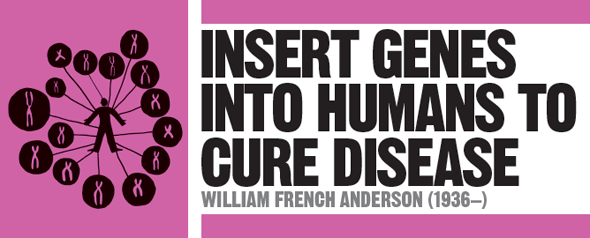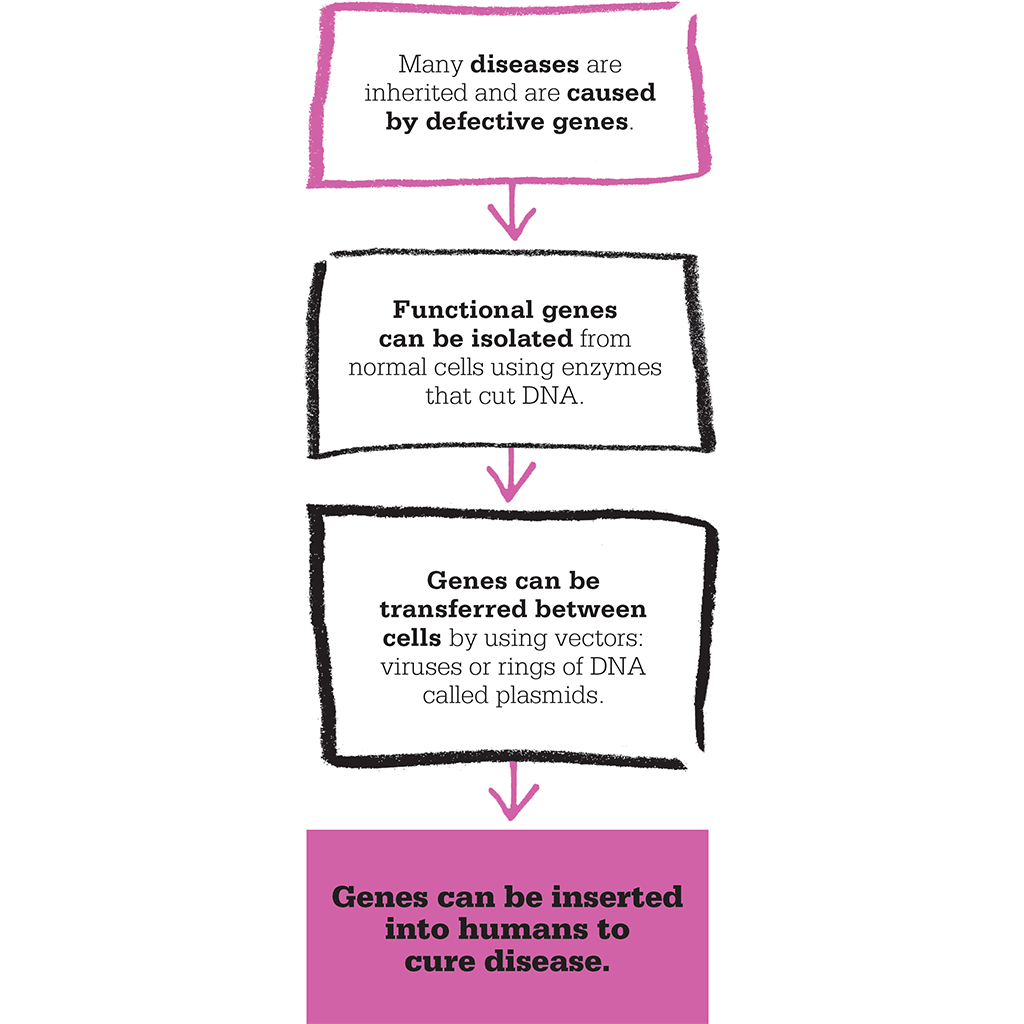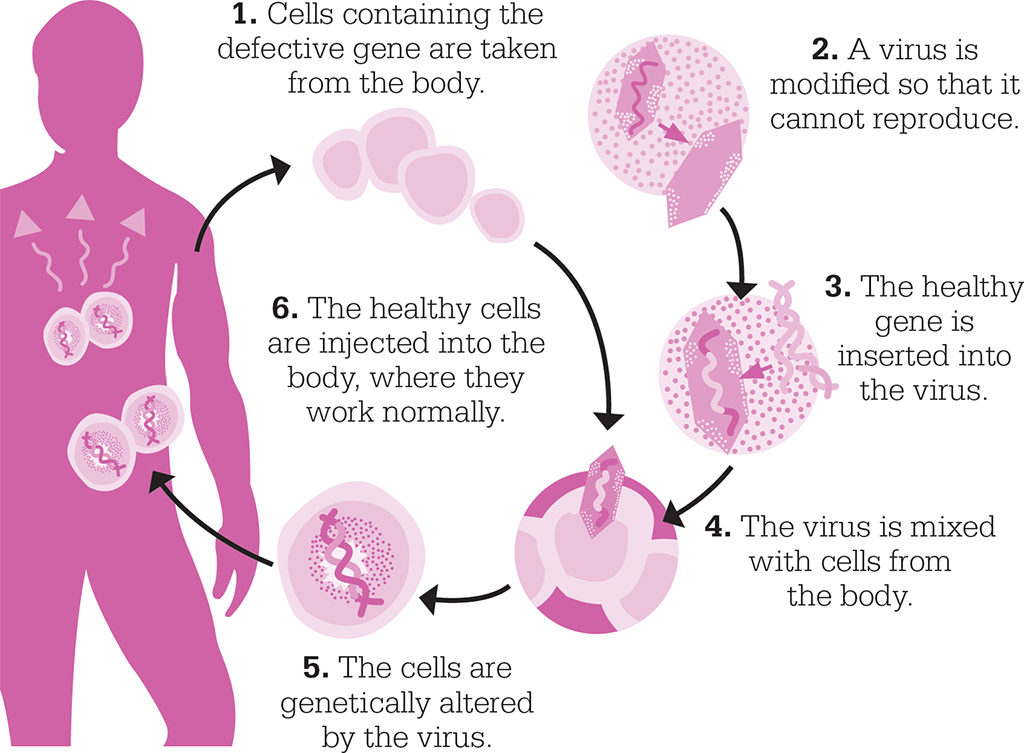
IN CONTEXT
Biology
1984 US researcher Richard Mulligan uses a virus as a tool for inserting genes into cells taken from mice.
1985 William French Anderson and Michael Blaese show this technique can be used to correct defective cells.
1989 Anderson performs the first safety test in human gene therapy, injecting a harmless marker into a 52-year-old man. He performs the first clinical trial a year later.
1993 UK researchers describe the results of successful animal experiments providing gene therapy treatment of cystic fibrosis.
2012 The first multi-dose trial of cystic fibrosis gene therapy on humans begins.
The human genome – the entirety of a human’s hereditary information – consists of about 20,000 genes. A gene is a living organism’s molecular unit of heredity. However, genes often malfunction. A defective gene is made when a normal gene is not copied properly, and the “error” is passed down from parents to offspring. The symptoms that arise from these so-called genetic diseases depend upon the gene involved. A gene works by controlling the production of a protein – one of many that perform a vast variety of functions in living organisms – but this production fails if there is an error. For example, if a blood-clotting gene malfunctions, the body stops producing the blood protein that makes blood clot – causing the disease haemophilia.
Genetic diseases cannot be cured by conventional drugs, and for a long time, it was only possible to alleviate the symptoms and make a sufferer’s life as comfortable as possible. But in the 1970s, scientists began considering the possibility of “gene therapy” to cure disease – using “healthy” genes to replace or override faulty ones.

Introducing new genes
Genes can be introduced into diseased parts of the body by a vector – a particle that “carries” the gene to its source. Researchers investigated several possibilities for entities that might act as a vector – including viruses, which are more normally associated with causing disease, rather than fighting it. Viruses naturally invade living cells as part of their infection cycle, but could they perhaps carry the therapeutic genes with them?
In the 1980s, a team of American scientists including William French Anderson succeeded in using viruses to insert genes into cultured (laboratory-grown) tissue. They tested it on animals that suffered from a genetic immune deficiency disease. The aim was to get the therapeutic gene into the animals’ bone marrow, which would then make healthy red blood cells and cure the deficiency. The test was not very effective, although the procedure worked better when white blood cells were targeted.
In 1990, however, Anderson performed the first clinical trial, treating two girls who both suffered from the same immune deficiency condition, known as bubble-boy disease. Sufferers of this condition are so susceptible to infection that they may have to spend their whole lives in a sterile environment, or “bubble”.
Anderson’s team took sample cells from the two girls, treated them with the gene-carrying virus, then transfused the cells back into the girls. The treatment was repeated several times over two years – and it worked. However, its effects were only temporary, since new cells made by the body would still inherit the malfunctioning gene. This remains a central problem for gene therapy researchers today.

Scientists use viruses as a vector to introduce healthy genes into a patient’s cells.
"Gene therapy is ethical because it can be supported by the fundamental moral principle of beneficence: it would relieve human suffering."
William French Anderson
Future prospects
Remarkable breakthroughs have been made in the treatment of other conditions. In 1989, scientists working in the USA identified the gene that causes cystic fibrosis. In this condition, defective cells produce sticky mucus that clogs lungs and the digestive system. Within five years of identifying the defective gene responsible, a technique had been developed to deliver healthy genes using liposomes – a type of oily droplet – as a vector. Results from the first clinical trial are due in 2014.
Considerable challenges still remain to be overcome to extend gene therapy. Cystic fibrosis is caused by a defect in just one gene. However, many conditions with a genetic component – such as Alzheimer’s, heart disease, and diabetes – are caused by the interplay of many different genes. Such conditions are far harder to treat, and the search for successful, safe gene therapies is ongoing.
See also: Gregor Mendel • Thomas Hunt Morgan • Craig Venter • Ian Wilmut